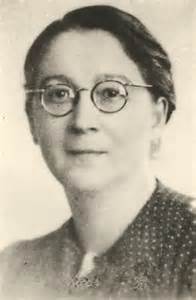Rose Valland
| Rose Valland | |
|---|---|
 |
|
| Born |
Rose Antonia Maria Valland 1 November 1898 Saint-Étienne-de-Saint-Geoirs, Isère |
| Died | 18 September 1980 (aged 81) |
| Nationality | French |
| Occupation | Museum curator |
| Known for | Commission for the Recovery of Works of Art |
| Awards |
Légion d'honneur; Commandeur of the Order of Arts and Letters; Médaille de la Résistance; Officer's Cross of the Order of Merit; Medal of Freedom |
Rose Antonia Maria Valland (1 November 1898 – 18 September 1980) was a French art historian, member of the French Resistance, captain in the French military, and one of the most decorated women in French history. She secretly recorded details of the Nazi plundering of National French and private Jewish-owned art from France; and, working with the French Resistance, she saved thousands of works of art.
Valland was born in Saint-Étienne-de-Saint-Geoirs, Isère, the daughter of a blacksmith. Like many gifted pupils from humble backgrounds, she received a scholarship in an école normale, a teacher school. She graduated in 1918, with the plan of becoming an art teacher. She studied art at the École nationale des beaux-arts de Lyon, graduating in 1922. Valland then topped the competitive exam for art teacher training and underwent two years of training in the École nationale supérieure des beaux-arts in Paris, graduating 1925. Valland then became a drawing teacher in high schools, but began to study art history in the école du Louvre and the university of Paris. She graduated in 1931 with a special diploma from the école du Louvre and engaged in graduate studies at the collège de France. In 1932, Valland became volunteer assistant curator at the Jeu de Paume Museum.
In 1941, during World War II, Valland was put in paid service and became the overseer of the Jeu de Paume Museum at the time of the German occupation of France. Through the "Special Staff for Pictorial Art" (Sonderstab Bildende Kunst) of the Einsatzstab Reichsleiter Rosenberg für die besetzten Gebiete (The Reich Leader Rosenberg Institute for the Occupied Territories), or ERR, the Germans began the systematic looting of artworks from museums and private art collections throughout France. They used the Jeu de Paume Museum as their central storage and sorting depot pending distribution to various persons and places in Germany.
...
Wikipedia
